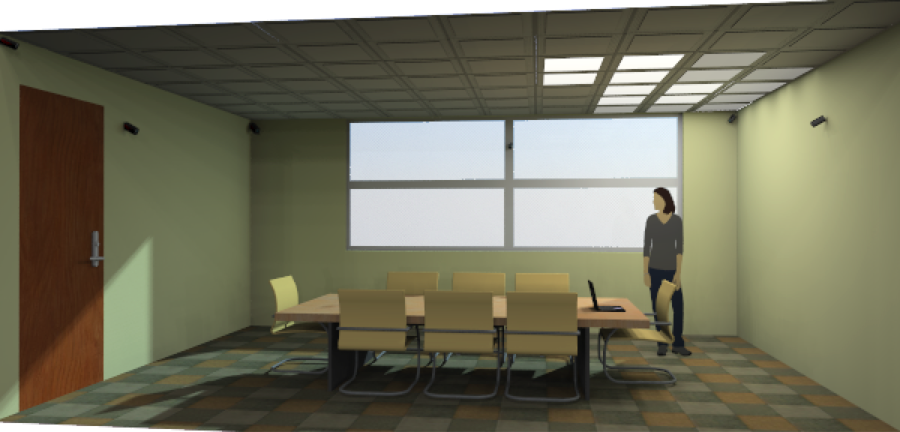Smart Spaces – Applications of Smart Lighting Technology
Emerging mobile and sensor network technologies are creating unique opportunities to enhance health and safety in indoor spaces, while conserving energy. In the Smart Lighting Center, we are exploiting the “light bulb” as an opportunistic carrier of new sensors and control. We are focused on opportunities that will improve the quality of life for individuals and society.
Health and Safety
Monitoring in-home activity for the elderly:
Elderly people should be able to live independently in their own homes. New technology can measure in-home activities to establish the well being of elders and to quantify long-term changes that might require intervention. Rapid response can be provided in cases of unusual inactivity.
Enhancing sleep quality with the blue-spectrum light:
Studies of human circadian rhythm imply that the blue spectrum of visible light is responsible for cortisol/melotonin cycles that impact human sleep. Augmenting or diminishing the presence of this blue spectrum can affect sleep quality. This blue light can be managed with blue-filter glasses or by LED luminaires, improving sleep quality.
Energy Efficiency
Saving energy using need-based lighting management in homes and offices:
By collecting and identifying real time data about occupants, incident sunlight and light-field sensing, we can optimize the required light output both day and night for each on-site luminaire. By maximizing light usage in the appropriate places expected energy savings are between 40-70% higher than simply adopting CFL or LED lightbulbs.
High Performance Networking
Localized, high-performance computer networking with optical transceivers:
In apartment or condo complexes, the high density of existing WiFi access points cause interference with one another. Using light technology to transmit information could free up wireless bandwidth and improve network access.
Localization
Indoor navigation:
Indoor navigation can enable easier directional access and improve information in high traffic buildings. Buildings that might benefit from light sensitive navigation include: hospitals, doctors offices, shopping malls and museums.
Functions provided by smartlighting technology include:
- Gesture recognition and analysis
- Color intensity sensing and monitoring
- Smart grid control
- Activity sensing and analysis
- Full spectrum lighting control
- Indoor navigation (indoor GPS)


